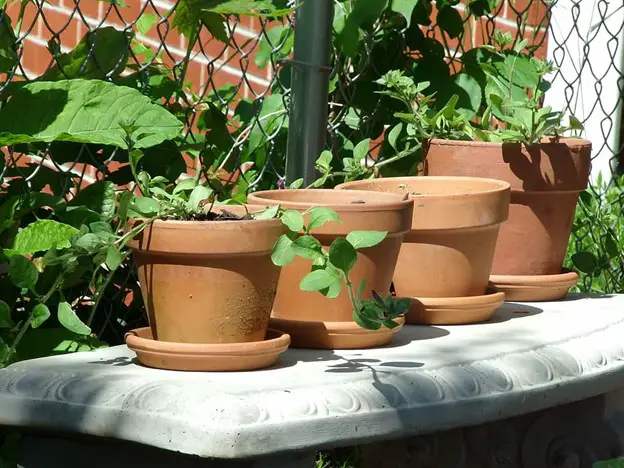Your passion for gardening gets you close to nature and helps you heal from within. But while nature heals you, it needs to be taken care of as well. Apart from your garden’s nutritional needs, you also need to understand which type of pot suits your plants the best. Choosing between terracotta and clay pots can be a big determiner of whether your plan thrives or succumbs to any vegetation ailment. So, what should you choose? Terracotta or clay pots! And are they even different? Let us learn!
How Is A Terracotta Pot Different From A Clay One?
If you frequently visit a plant nursery, you would have seen several terracotta pots lying around. These pots can be identified by their reddish-brown color that forms due to the presence of iron oxide. However, depending on the base materials and earthenware soil used, the color can vary from dark brown to slightly reddish-orange in color.
Terracotta is made from earthenware clay with a high concentration of iron oxide, as mentioned earlier. Once the desired shape has been formed, it is fired in a kiln at low firing temperatures, which gives it the classic porosity factor.
On the other hand, clay is a broader classification that includes terracotta alongside porcelain/kaolin and stoneware. Additionally, it also features synthetic clay variants such as polymer or air-dry clay. While most of these clay variants are permeable and porous, they are fired in the mid or high-firing range, with the exception of earthenware.
Terracotta vs. Clay Pots: Pros And Cons In Gardening
While terracotta is a part of the clay family, there are some differences that you need to keep in mind when using other clay types as pots for your gardening needs. So, let us decode!
1. Porosity:
Plants thrive in porous pots as their roots get to breathe and hence avoid rotting if you tend to overwater or they are exposed to rain for days. While both terracotta and clay pots tend to be porous, in the case of clay pots, the pores typically shrink more. So, clay pots might not be as porous as their counterparts. Plants that need high moisture content will do well in clay pots, while the ones that love airy roots would do better with terracotta.
2. Bacterial Growth:
Terracotta pots, even when glazed, aren’t as water-proof as that of clay pots. While it isn’t really harmful to your plants, it is better to scrub it off with warm water before it spreads to the roots, especially if the plant is notorious for its delicate sensitivity. Clay pot, on the other hand, is a great option if you are looking for something that isn’t vulnerable to bacterial growth.
3. Strength/Durability:
Terracotta pots, while great for the roots, might not be as long-lasting as the clay ones. If you are looking for pots that will last for years without breaking down, go with clay pots. Keep in mind that terracotta pots are also a great option unless you tend to move around the plant often, which can cause it to break. Depending on your personal preference, you can opt for either for your plants. In case you are looking for high-strength and crack-resistant terracotta pots, you can try the Vensovo Terracotta Pots. These 4-inch pots come with a saucer to hold extra water and feature a small drainage hole at the bottom.

4. Insulation And Temperature Control:
Both clay and terracotta pots are great insulators and aid with temperature control. However, terracotta tends to be better at the job. Given its high porosity, it helps maintain the temperature inside the pot while reducing heat stress on the roots. So, if you tend to live in a location where temperatures soar high for most of the year, it is better to opt for terracotta pots.
Additionally, during cold months, the water present in the molecules of the pot or in the soil doesn’t evaporate as quickly. This is true for both clay as well as terracotta pots. So, the plant might not be well-insulated in both. However, if given an option between the two, terracotta would fare well, given the high porosity factor.
Conclusion
Both terracotta and clay pots do well when it comes to gardening. However, each plant has a different growth pattern and different needs. So, if your garden mostly comprises plants that like their roots moist but not wet, terracotta is the way to go. However, if your plant needs a lot of moisture with essentially damp soil, clay pots would be your best bet. So, always choose according to your plants’ needs.







